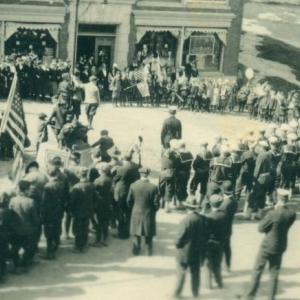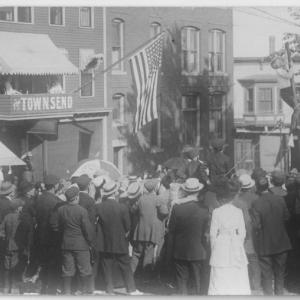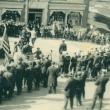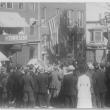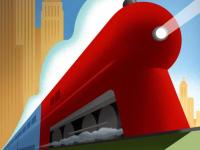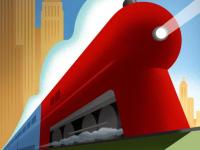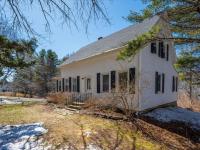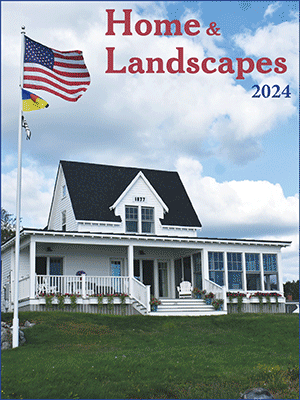Armistice Day 1918
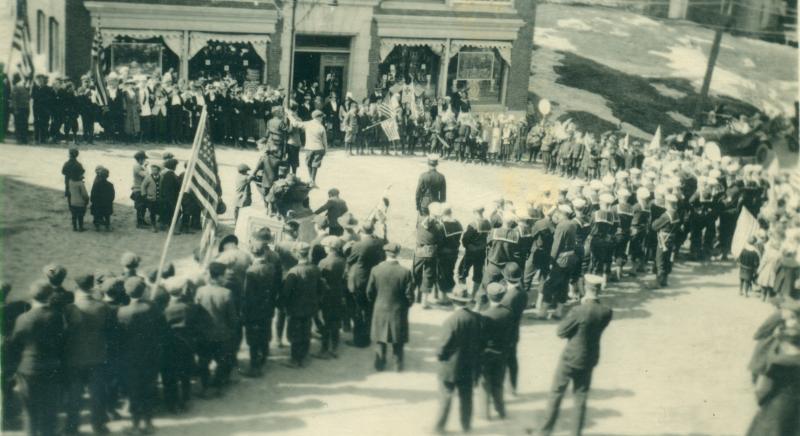 The historical society has dozens of parade photos, almost all undated and showing Townsend Avenue businesses hung with bunting. This view may have been the parade gathering on the first Armistice Day. The impromptu parade(s) that sprang up that morning upon the news of peace would not have allowed time to hang bunting. Boys have climbed on the Townsend Avenue horse trough in Bank Square in front of the bank for a better vantage. The Coast Patrol men are all in uniform, and the coats show the weather is cold. Part of the area where the Kaiser bonfire was located, the ledges between the bank and the brick house, are visible.
The historical society has dozens of parade photos, almost all undated and showing Townsend Avenue businesses hung with bunting. This view may have been the parade gathering on the first Armistice Day. The impromptu parade(s) that sprang up that morning upon the news of peace would not have allowed time to hang bunting. Boys have climbed on the Townsend Avenue horse trough in Bank Square in front of the bank for a better vantage. The Coast Patrol men are all in uniform, and the coats show the weather is cold. Part of the area where the Kaiser bonfire was located, the ledges between the bank and the brick house, are visible.
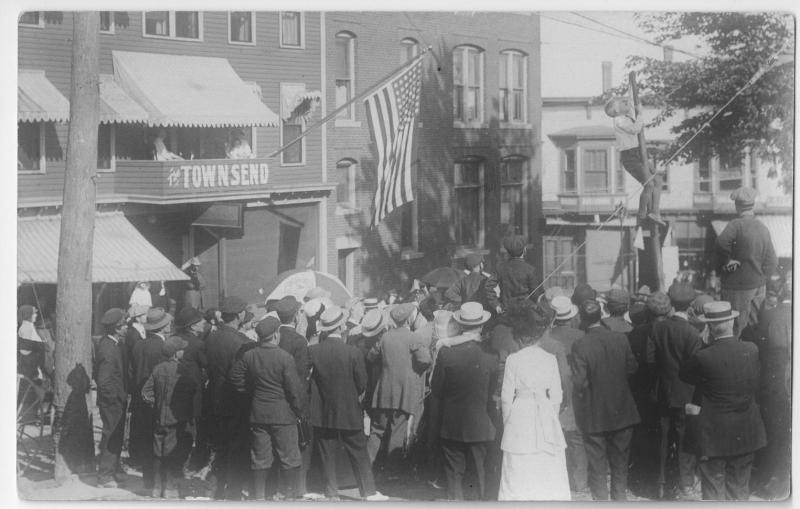 This view also may have been taken during the first Armistice Day parade on November 11, 1918, with onlookers looking down to Townsend Avenue from Oak Street next to the bank and the Townsend Hotel. A boy has again found something climbable!
This view also may have been taken during the first Armistice Day parade on November 11, 1918, with onlookers looking down to Townsend Avenue from Oak Street next to the bank and the Townsend Hotel. A boy has again found something climbable!
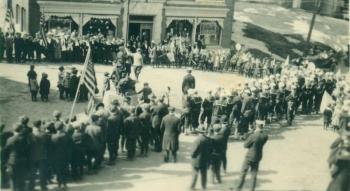 The historical society has dozens of parade photos, almost all undated and showing Townsend Avenue businesses hung with bunting. This view may have been the parade gathering on the first Armistice Day. The impromptu parade(s) that sprang up that morning upon the news of peace would not have allowed time to hang bunting. Boys have climbed on the Townsend Avenue horse trough in Bank Square in front of the bank for a better vantage. The Coast Patrol men are all in uniform, and the coats show the weather is cold. Part of the area where the Kaiser bonfire was located, the ledges between the bank and the brick house, are visible.
The historical society has dozens of parade photos, almost all undated and showing Townsend Avenue businesses hung with bunting. This view may have been the parade gathering on the first Armistice Day. The impromptu parade(s) that sprang up that morning upon the news of peace would not have allowed time to hang bunting. Boys have climbed on the Townsend Avenue horse trough in Bank Square in front of the bank for a better vantage. The Coast Patrol men are all in uniform, and the coats show the weather is cold. Part of the area where the Kaiser bonfire was located, the ledges between the bank and the brick house, are visible.
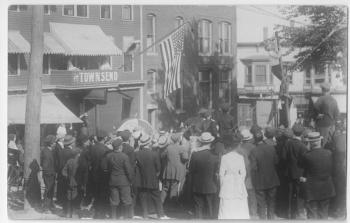 This view also may have been taken during the first Armistice Day parade on November 11, 1918, with onlookers looking down to Townsend Avenue from Oak Street next to the bank and the Townsend Hotel. A boy has again found something climbable!
This view also may have been taken during the first Armistice Day parade on November 11, 1918, with onlookers looking down to Townsend Avenue from Oak Street next to the bank and the Townsend Hotel. A boy has again found something climbable!
At 3 a.m. on November 11, 1918, the Navy's local Coast Patrol, located in the old Carbone building on Boothbay Harbor's waterfront, picked up wireless traffic that peace had been declared in France, marking the end of World War I. As we all learned somewhere some time, peace came at the 11th hour of the 11th day of the 11th month. For background, two articles about the coast patrol appeared in the July Registers and are available at the historical society. This article is drawn from the Register's Nov. 15, 1918 account of the "peace celebration." I thank Giselle Armstrong for her help with this article.
The Parades and a Grand Holiday
Celebrating began between 5 a.m. and 6 a.m. with Clarence Hodgdon firing several shots across Mill Cove, while the Navy boys on Wharf Street turned out with horns, drums, and parade regalia. The yacht club, then on Commercial Street, fired its cannon at 6 a.m., amid the clamor of church bells, whistles, and the "din of the naval boys." Holidays were declared as workers arrived at the shipyards, large and small, and the businesses. Soon there were three parades: the naval boys, the East Coast yard workers on the east side, and the Atlantic Coast yard workers on the west side, helped by Bill Stewart's ox team and cart. About 7 a.m. the separate parades were brought together, accompanied by three quickly-assembled bands: those of B. E. Hume, the Sons of Veterans, and the Coast Patrol.
First in line for the parade was the town's old hearse with Dr. George Gregory as Uncle Sam, accompanied by Herbert Reed and Willard Benner. Placards on the hearse read, "To Hell with the Kaiser," with "borrowed" gravestones on top inscribed with "Kaiser Bill." Almost everyone who was out, old and young, joined the parade waving flags, beating tin cans, and blowing tin horns, while Lester Hemore, the telephone company man, cranked a big siren. The cheering, joyful parade throng went over a big part of the harbor, both the east and west sides.
"The parade, although quickly arranged was even better for being spontaneous and imbued with keenest rejoicing at the first flush of our allied victory and its momentous import. Everyone seemed to realize how much the day meant, and the accustomed workday and school day were forgotten."
The Kaiser's Funeral Pyre
The parade was not the end of festivities. "A great funeral pyre was built up on the ledge back of the bank building and it was announced the Kaiser was to be cremated at 7:30 sharp." The largest crowd ever gathered appeared, strung out along the harbor's park and ledges (occupied now by the post office and the parking lot below) and stretching over toward the brick house and onto Oak Street and Townsend Avenue—all there to watch the wooden boxes and tar barrels go up in flames.
The pallbearers brought the body, though "badly punched up and battered on its way to the obsequies [funeral], the Kaiser's body was plainly recognizable. Representative James B. Perkins delivered the funeral oration, and was quite mild in his eulogies. Then B. E. Hume sounded taps and the body in its wooden casket was placed at the very top of the big pile. The fires were lighted and made rapid reaches for the world's worst human enemy. The Kaiser's head, stuck up in the box for all to view, was the last to catch afire. While the body was going up to smoke and the soul probably descending to its future home, B. E. Hume played 'The Star Spangled Banner' as a cornet solo."
Several hours passed before all the barrels and boxes were consumed, and people remained as long as the fire lasted. Many went on to dance at the Pastime Theatre (across from the bank and upstairs), where manager Saul Hayes provided a good orchestra and program. The Methodist Church men and boys managed to keep the church bell ringing steadily from morn till late at night, occasioning many blistered hands. The first Armistice Day here sounded spectacular!
The end of the war meant no more reports of local men's deaths overseas, no more Liberty bonds or saving stamps, no more drives for donated items such as binoculars, and no more women stepping into men's jobs. There would also be fewer "war gardens" to make up for the lack of farm labor and no more rationing of food, coal, and gas, with "heatless Mondays," "lightless Tuesdays," and "wheatless Wednesdays." Fewer hardships for all certainly deserved the welcome it got.
Armistice Day became Veterans Day right after World War II.
Event Date
Address
United States

